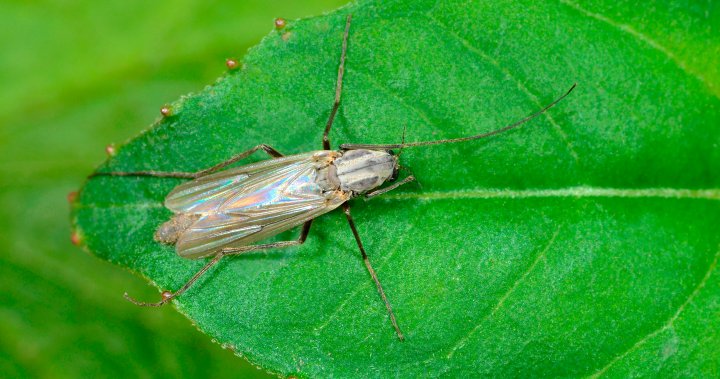As spring arrives in Toronto, so do swarm of midges by the lakeside. These tiny insects, known as Chironomidae, start off as larvae in Lake Ontario, feeding on sediments at the bottom of the lake. When they emerge as adults, they fly in huge swarms, with mostly males until a female arrives for mating. Despite the large numbers seen, these midges do not bite. They have a short lifespan, with individuals living only a few days to a couple of weeks. Different species of midges emerge at different times throughout the summer, from April to August and possibly in September.
Those living near the lakeside in Toronto may have noticed the increase in midge activity as the weather warms up. These flies are attracted to light, so turning off lights and keeping screens on doors and windows can help keep them out. However, using zappers is not recommended as they will kill beneficial insects feeding on midges. Entomologist Antonia Guidotti suggests waiting out the swarm, as they will eventually return to the water to lay eggs and die off. Chironomidae flies are an important part of the ecosystem, serving as food for fish, aquatic animals, and birds. With insect populations declining, midges play a crucial role in the food chain, with over 800 species recorded in Ontario.
Guidotti explains that midges emerge at different times depending on temperature and other variables. The emergence of midges can vary from year to year, with some years seeing earlier or later swarms than others. As the weather warms up, more midges are expected to appear in Toronto in the coming weeks, likely reaching a peak in May. Those living further north than the lakeside are less likely to encounter midges, as these insects need to stay close to the water. Although they may be an annoyance to residents, midges serve an important purpose in the ecosystem and are crucial for maintaining a healthy food chain.
In conclusion, midges in Toronto are a common sight during the warmer months, with swarms emerging near the lakeside in spring and summer. These insects play a vital role in the ecosystem, serving as food for fish, aquatic animals, and birds. While they may be a nuisance to residents, especially those living near the lake, midges are an essential part of the food chain. Taking precautions such as turning off lights and keeping screens on doors and windows can help reduce their presence in homes. With over 800 species recorded in Ontario, midges play a significant role in maintaining biodiversity and supporting other species in the ecosystem.


